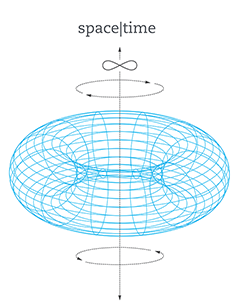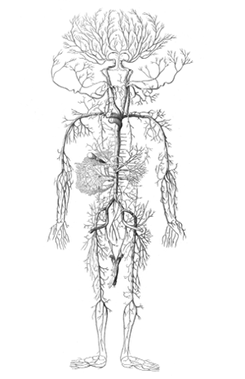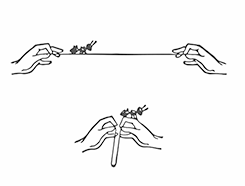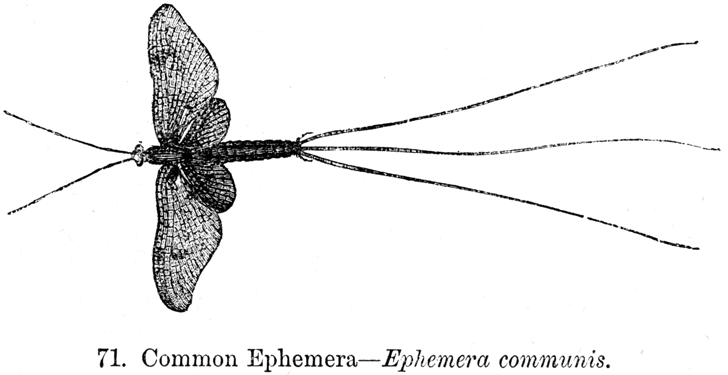
consciousness

toroidal space|time representation
Abstract
As a sensate infrastructure, the body conveys information to and from the brain to complete a perceptual concordance with consciousness. This system of reciprocal communication both positions consciousness in spacetime, and allows that consciousness is dependent upon the body to roam. Through movement we comprehend. The corporeal occupation of spacetime permits human consciousness access to the phenomena of its physical environment, whereby it uses language (utterance) to both construct and describe this existence. This mediated transmission evolved into story and narrative in an attempt to apprehend, control and more importantly convey what is perceived. It is precisely the components of space and time, critical elements to our own existence that play such a paramount role in our ability to generate meaning and narrative comprehension. As our dimensional understanding has evolved and extended, so too has our understanding that space and time are crucial components of narrative. With the emergence of auxiliary narrative spaces, this movement of consciousness affords opportunities to create new narrative imperatives. In the theoretical realm of physics, the tesseract makes it possible to overcome the restraints of time. The tesseract is a gravitational wormhole that represents the physical compression of space that circumvents time in order to move from one location in spacetime to another. The index, as part of the body, but also the mechanism for applying a collapsed signification, requires both utterance (mediation) and event (temporal-frame) in order to create cognitive meaning. The indexical functions as a linguistic tesseract that collapses language creating a bridge over the semantic divide between utterance and meaning. This paper places the function and potential of the tesseract within the paradigm of cognitive narratology through the argument that compression is the mechanism for narrative construction of story, autopoiesis, and the locality of self.
link to article at Noemalab
Bibliography
Bahktin, Mikhael (1986). Speech Genres and Other Late Essays (trans. Vern W. McGee). Austin, TX: University of Texas Press.
Barsalou, Lawrence (1999). Perceptual symbol systems. Behavioral and Brain Sciences 22, 577–660.
Baum, L. Frank (1901). The Master Key: An electrical fairytale founded upon the mysteries of electricity and the optimism of its devotees. Indianapolis, IN: The Bowen-Merrill Co., 1901.
Blackmore, Susan (2006). Natural selection applies to everything. New Humanist, May/June 2006, 23-24. [Accessed 24 June, 2015].
Boyd, Brian (2009). On the Origin of Stories: Evolution, cognition, and fiction. Cambridge, MA: Harvard University Press.
Caracciolo, Marco (2011). Narrative, Embodiment, and Cognitive Science: Why Should We Care? A lecture at Ohio State University, Nov. 2011. [Accessed 20 June, 2015].
Damasio, Antonio (1994). Descartes’ Error: Emotions, reason and the human brain. New York, NY: Avons Books.
Dawkins, Richard (2006). The Selfish Gene, London: Oxford University Press.
Dredge, Stuart (2014). Facebook Closes Its $2bn Oculus Rift Acquisition. What next? The Guardian Online, 2000-. Article published 22 July 2014. [Accessed 17 Feb 2015]
Glenberg, Arthur (1997). What memory is for. Behavioral and Brain Sciences 20, 1–55.
Herman, David (2014). Cognitive Narratology. The living handbook of narratology, revised Dec 2013. [Accessed 01 October 2014].
Lakoff, George, & Johnson, Mark (1999). Philosophy in the Flesh: The embodied mind and its challenge to western thought. New York, NY: Basic Books
Lewis, C.I. (1929). Mind and the World Order: Outline of a theory of knowledge. New York, NY: Charles Scribner’s Sons. [Accessed 01 July 2015]
McLuhan, Marshal, & Fiore, Quentin, with Jerome Agel. (2003). The Medium is the Massage: An inventory of effects. Toronto, CA: Penguin Books.
Peirce, C. S. (1866/1935). Collected Papers—Scientific Metaphysics, vol. 6 (eds. C. Hartshorne & P. Weiss). Cambridge, MA: Harvard University Press.
Shapiro, Lawrence (2011). Embodied Cognition. Oxford, UK: Routledge..
Wilson, Margaret (2002). Six views of embodied cognition, Psychonomic Bulletin & Review 2002, 9 (4), 625-636.
Keywords
autopoiesis, consciousness, embodiment, index, locality, mediation, narratology, spacetime, utterance, virtual

embodiment

Memetic propigation

The Tesseract
